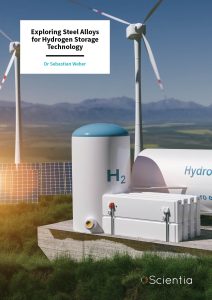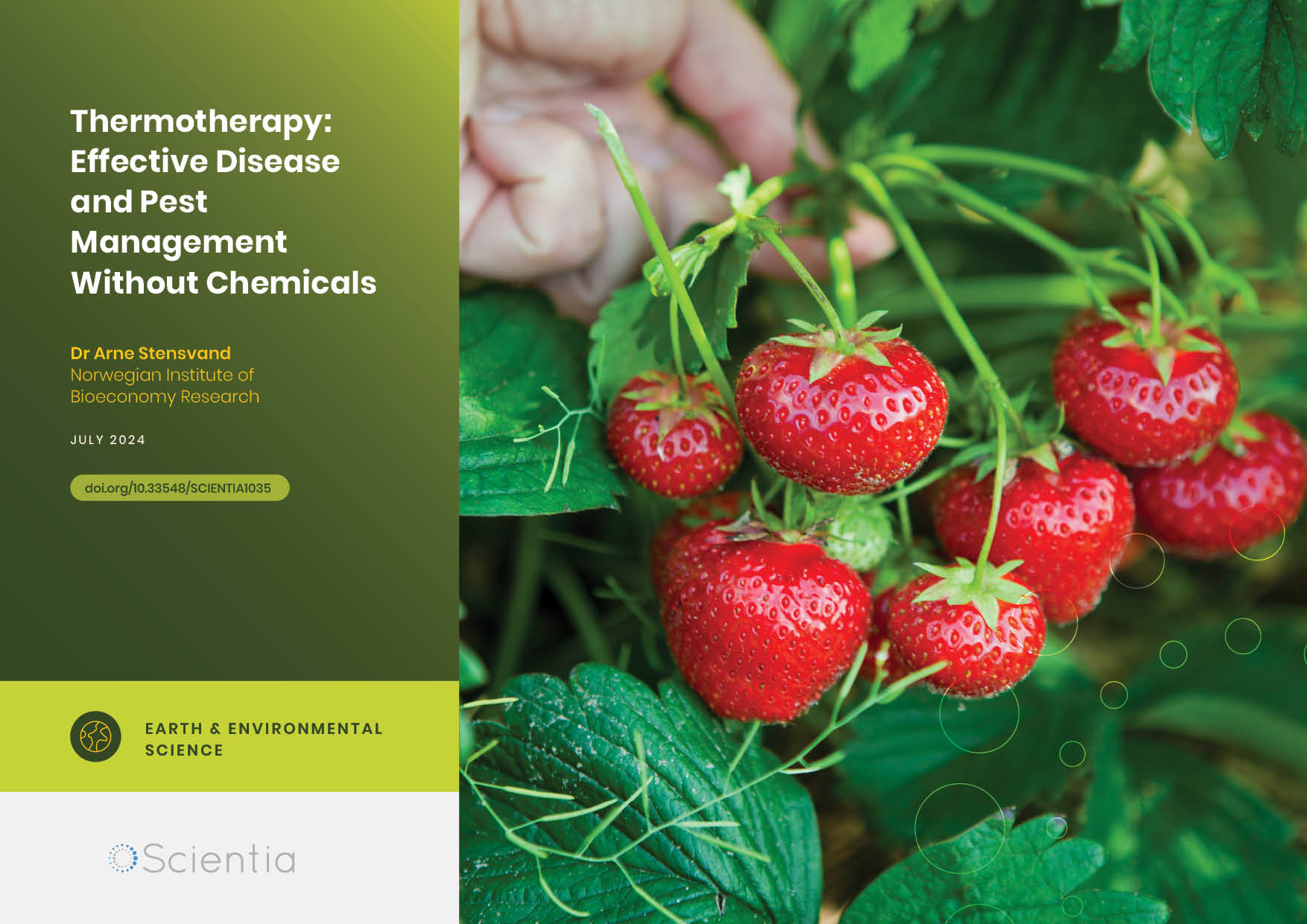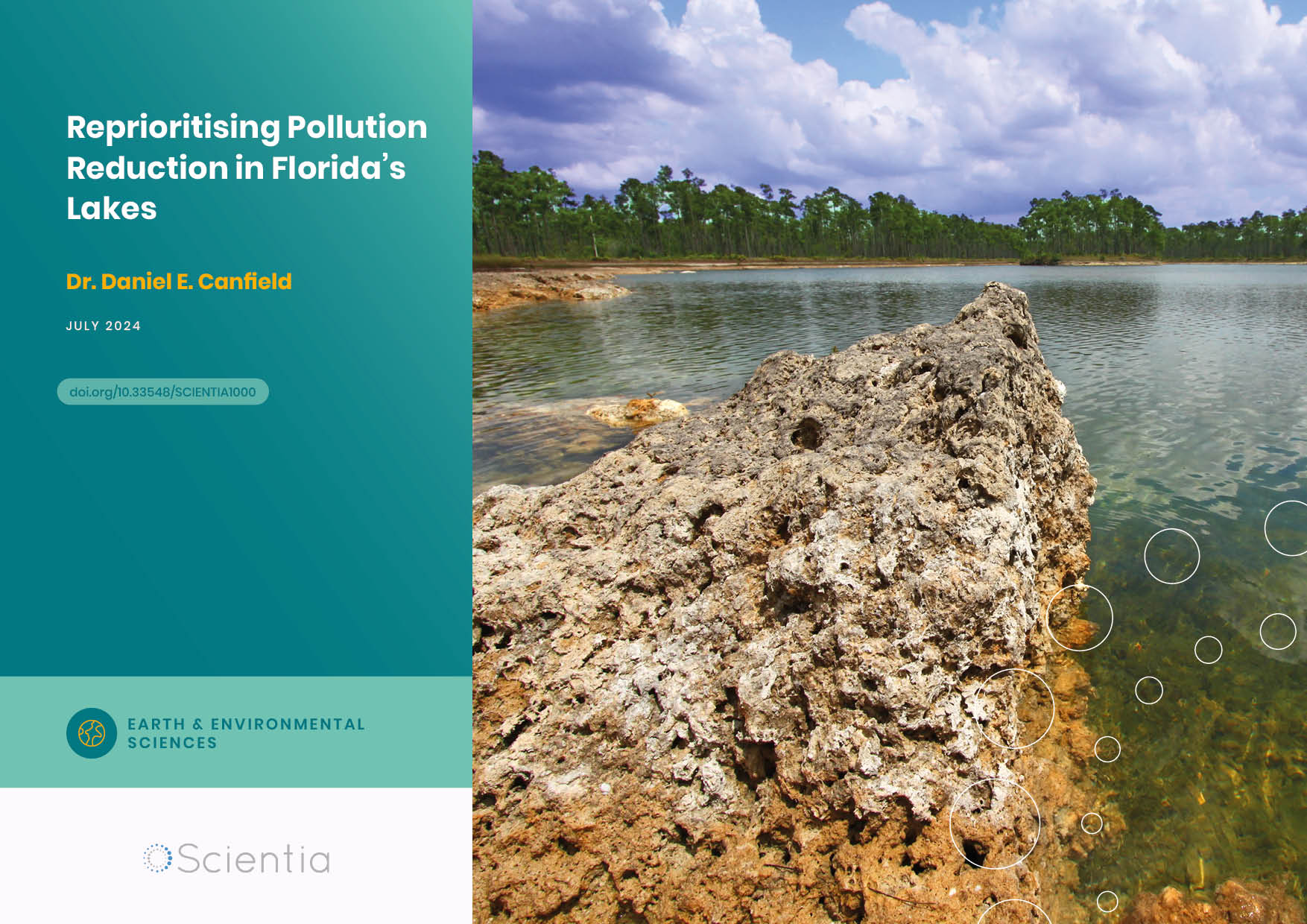Dr Sebastian Weber – Exploring Steel Alloys for Hydrogen Storage Technology
Hydrogen fuel presents a promising route towards a carbon-free energy source for vehicles – but the technology still faces challenges relating to storage. Dr Sebastian Weber at Ruhr University Bochum, alongside collaborators Dr Gero Egels, Dr Robert Fussik and Dr Mauro Martin, studies the capabilities and limitations of specialised steel alloys for heavily stressed components in high-pressure hydrogen storage systems. Using a combination of simulations and analytical techniques, the team aims to provide a detailed picture of how the atomic-scale structures of these materials relate to their brittleness when exposed to hydrogen. Their discoveries could eventually lead to the development of new materials, which can be used as high-performing components in hydrogen storage systems.
Hydrogen Fuel
As the need to end our reliance on fossil fuels becomes increasingly urgent, research into sustainable energy has massively ramped up in recent years. So far, discussions of these developments have been dominated by renewable energy – which must often be coupled with high-capacity battery storage. An additional promising route lies in hydrogen fuel, which when burned with oxygen or converted in fuel cells, can be used to power cars, buses, and even spacecraft, with zero greenhouse gas emissions.
The idea is fairly simple, and has already been around for some time, but there is still a long way to go before hydrogen fuel can become widely implemented on a global scale. The overarching challenge is that hydrogen is notoriously difficult to store. To maintain high efficiencies, it must either be contained as a pressurised gas, or cooled to ultra-low temperatures, converting it into a liquid form. Added to this, since hydrogen atoms are so small, its ions can readily diffuse into the atomic lattice of steel and deteriorate the steel’s mechanical properties.
Altogether, these factors place immense importance on the materials that are used as components in hydrogen storage systems. Without careful precautions, hydrogen can cause cracks to form in various parts, such as high-pressure valves and fittings, through an effect named ‘hydrogen embrittlement’. Since hydrogen is highly flammable, this can unleash catastrophic damage if cracking causes components to fail. Dr Sebastian Weber at Ruhr University Bochum and his collaborators aim to show how this risk can be avoided, by carefully selecting the chemical compositions of steels, making them less vulnerable to cracking.
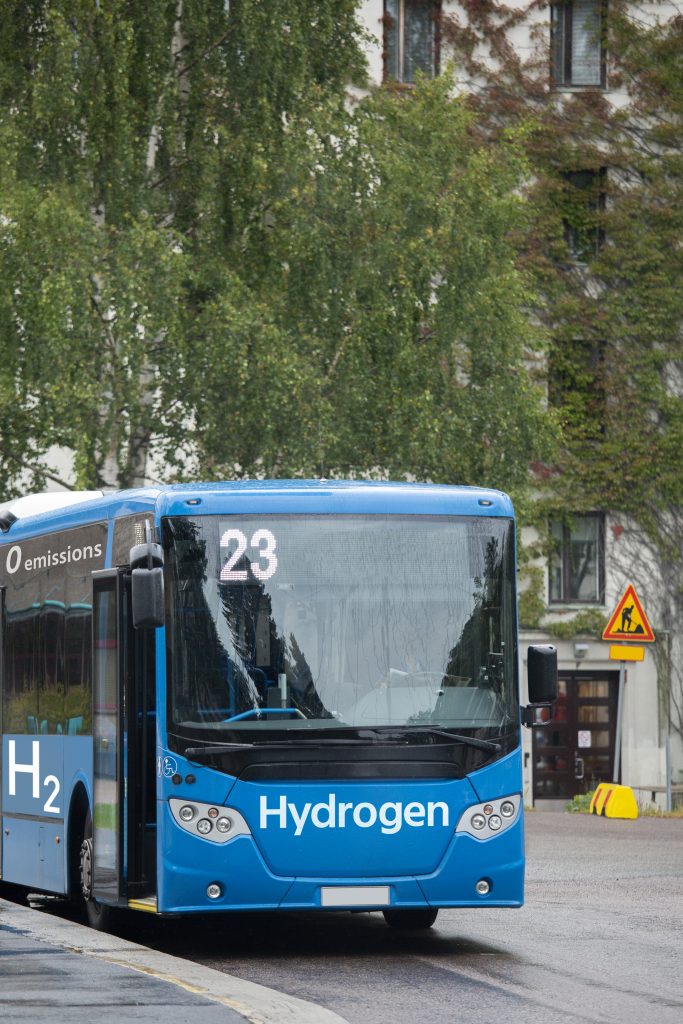
Understanding Embrittlement
To build components for high-pressure hydrogen storage, engineers often use relatively high-cost materials named ‘austenitic steels’ – whose structures prevent them from embrittling and cracking when cooled and pressurised. This can be achieved by alloying iron with elements such as nickel, chromium, and nitrogen, stabilising the so-called ‘austenitic’ structure.
Already in recent years, many advances have been made in our understanding of how hydrogen embrittlement occurs in austenitic steel. This includes the ‘hydrogen enhanced localised plasticity’ (HELP) mechanism, which increases the amount of deformation that occurs in the metals on an atomic scale. Researchers have also gained an advanced understanding of ‘hydrogen-induced decohesion’ – where atomic bonds are weakened in the presence of hydrogen.
Furthermore, recent research has filled in several gaps in our knowledge of how production, processing, and subsequent deformation influence the inner structure of austenitic steels. Among these discoveries are details about the formation of ‘martensite’. Martensite is a hard and brittle form of steel, which may emerge due to deformations or supercooling of an austenitic crystal lattice, transforming the arrangement of its atoms. Since harder materials can’t change shape as readily when forces are applied, this effect also raises the risk of cracking. Yet as Dr Weber explains, ‘A high austenite stability will positively influence its resistance against hydrogen embrittlement, by impeding the formation of deformation-induced martensite.’
Ensuring Stability
Despite this level of understanding, fundamental issues still remain surrounding how this resistance can be ensured. Austenitic steels contain several different elements that influence austenite stability in different ways. In addition, the atoms of these different elements aren’t distributed evenly on microscopic scales, causing wide variations in the metal’s ‘local’ stability. This then risks creating weak points in parts made from the materials, which are more vulnerable to failure.
This problem can be overcome by increasing the content of alloying elements, at the expense of cost and resource efficiency. Although this would not make the material’s stability more uniform, it would enhance the overall stability and prevent the formation of martensite. Through their research, Dr Weber and his colleagues suggest how the need for this trade-off could be avoided, by ensuring the uniformity of alloying elements.
‘In terms of resource efficiency and cost efficiency, it is desirable to develop steels with a low content of alloying elements and a high resistance against hydrogen embrittlement,’ Dr Weber explains. ‘This project aims to develop stable austenitic steels with a low content of alloying elements, and a uniform distribution of the material properties.’ To achieve this, the researchers would need to determine the structural roles of individual elements within the alloy, while also distinguishing the unique tendencies of each element to separate from each other.
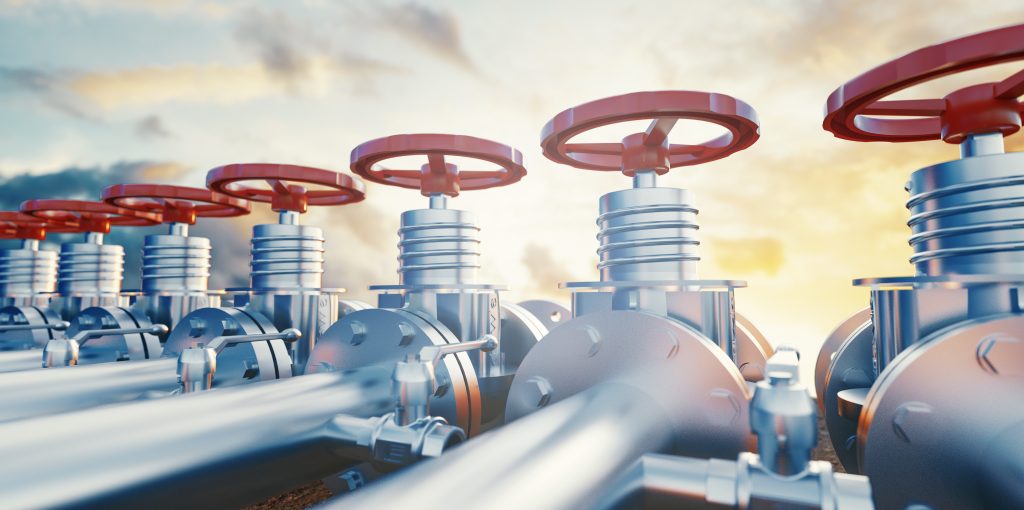
Identifying Non-uniform Distributions
In their studies, Dr Weber and his colleagues examine an austenitic steel alloy system containing iron, nickel, chromium, and multiple other elements – where they assume that each element will have a different influence on the metal’s embrittlement when exposed to hydrogen. In addition, they investigate how the alloy’s behaviour changes when further elements were added – such as nitrogen. ‘On the one hand, nitrogen positively influences the resistance against hydrogen embrittlement by increasing the austenite stability,’ Dr Weber illustrates. ‘Yet on the other, it promotes localised plastic deformation, thus enhancing the HELP-mechanism.’
To explore and influence the mechanisms underlying the formation of uneven element distributions, the team uses computer simulations driven by optimisation algorithms – which carry out operations repeatedly, and then compare their results with an idealised scenario after each run. Following these comparisons, the algorithms then modify their parameters to match this case more closely, until an ideal solution is reached.
In this case, optimisation involves altering the content of each element after each run, until the alloy’s material properties stop improving. Using this simulation technique, the researchers established a robust theoretical basis for the development of materials with improved properties.
Combining Analytical Techniques
Alongside these simulations, Dr Weber’s team also use a variety of techniques to analyse the structures and compositions of real alloy samples. Among these are ‘atom probe tomography’ (APT) – in which a needle-shaped sample, whose tip is just nanometres across, is placed in a vacuum chamber, and then cooled to ultra-low temperatures. The needle is then manipulated so that its tip points towards an ion detector.
When subjected to a high voltage, the tiny radius of the tip causes it to experience an extreme electrostatic field – almost driving its constituent atoms apart. Using a carefully controlled laser pulse, Dr Weber and his team can then eject individual ionised atoms from the sample at a precise time. The gap in time between the laser pulse, and the arrival of ions at the detector, can then be used to calculate the ratio between their masses and charges – a value that is unique to each ion. As a result, the technique allows the researchers to build up 3D pictures of element distributions within their samples, to within a nanometre-scale accuracy.
Along with APT, Dr Weber and his colleagues also use ‘energy dispersive x-ray spectrometry’ (EDS) – in which a beam of electrons focused onto the sample. Here, an electron occupying an inner orbit of its atom can be ejected, leaving behind a ‘hole’. This hole may then be occupied by an electron in an outer orbit – releasing a single x-ray photon as it makes the transition.
Since atoms of each element feature unique energy structures in their electron orbits, the energy of this photon will be unique to the element it originated from. So, by moving the electron beam around a larger sample, researchers can use this technique to determine the uniformity of chemical samples in extensive detail. The data obtained via EDS is then used to calculate spatial distributions of material properties on a microscopic scale.
Alongside EDS, further information about crystal structures can be gathered by measuring the diffraction of electron beams as they pass through the atomic lattices, and by using x-ray tomography to create cross-sections of samples, allowing researchers to build up detailed 3D images. ‘APT will be used for the spatially resolved measurement of the distribution of alloying elements on the atomic scale,’ Dr Weber explains. ‘The deformation and damage behaviour: both with and without the presence of hydrogen, will be examined using EDS, electron backscatter diffraction, and X-ray microtomography.’

Towards Sustainable Energy
By combining optimised computer simulations with each of these widely varied techniques, Dr Weber’s team hopes to gain an unprecedented picture of how austenitic steel, representing a vast array of potential chemical compositions, will behave when exposed to hydrogen.
By fine-tuning the compositions of these alloys to ensure a greater degree of uniformity in the alloying elements they contain, researchers could eventually build on the team’s discoveries to develop new austenitic steel alloys. These materials could feature a low concentration of alloying elements – but with more uniform distributions, making them less vulnerable to martensite formation and cracking when exposed to hydrogen.
If achieved, these techniques could make it far easier for engineers to design more sustainable storage systems for hydrogen fuel, where the HELP-mechanism can’t readily initiate. In turn, the team’s discoveries could help to accelerate efforts to roll out a large-scale infrastructure carbon-free hydrogen fuel. Alongside renewable energy technologies, these efforts would represent a critical step towards ending our reliance on fossil fuels.
SHARE
DOWNLOAD E-BOOK
REFERENCE
https://doi.org/10.33548/SCIENTIA809
MEET THE RESEARCHER
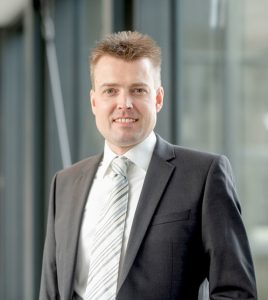
Dr Sebastian Weber
Institute for Materials
Chair of Materials Technology
Ruhr University Bochum
Bochum
Germany
Dr Sebastian Weber completed his PhD at Ruhr University Bochum in 2005. In 2007, he became the head of his own research group at the Max Planck Institute for Iron Research in Düsseldorf. He then headed research groups for Microstructure Design at the Helmholtz Centre Berlin for Materials and Energy, followed by the Powder Metallurgy group at Ruhr University Bochum. In 2014, Dr Weber became a Full Professor in Novel Manufacturing Technologies and Materials at Bergische University Wuppertal, where he worked for six years. He returned to Ruhr University Bochum in 2020, where he has now worked as a Full Professor of Materials Technology since 2020. Dr Weber’s main research interests include designs of iron-based alloys, the development and processing of high nitrogen steels, and the thermophysical properties of metallic materials.
CONTACT
E: weber@wtech.rub.de
W: https://www.wtech.ruhr-uni-bochum.de/lwt/mitarbeiter/weber.html.en
KEY COLLABORATORS
Prof. Dr Arne Röttger, Bergische University Wuppertal
Prof. Dr Christoph Broeckmann, RWTH Aachen University
Prof. Mujica, Escuela Ingeniería Metalúrgica, Tunja, Colombia
Prof. Dr Fechte-Heinen, Leibniz-IWT Bremen
Prof. Dr Biermann, Technical University Dortmund
Prof. Greiff, RWTH Aachen Univercity
FUNDING
Deutsche Forschungsgemeinschaft (DFG)
FURTHER READING
G Egels, R Fussik, S Weber, W Theisen, On the role of nitrogen on hydrogen environment embrittlement of high-interstitial austenitic CrMnC (N) steels, International Journal of Hydrogen Energy, 2019, 44, 32323.
C Izawa, S Wagner, M Deutges, M Martín, S Weber, R Pargeter, T Michler, HH Uchida, R Gemma, A Pundt, Relationship between hydrogen embrittlement and Md30 temperature: Prediction of low-nickel austenitic stainless steel’s resistance, International Journal of Hydrogen Energy, 2019, 44, 25064.
G Egels, LM Roncery, R Fussik, W Theisen, S Weber, Impact of chemical inhomogeneities on local material properties and hydrogen environment embrittlement in AISI 304L steels, International Journal of Hydrogen Energy, 2018, 43, 5206.
R Fussik, S Weber, Local microstructural stability and hydrogen embrittlement of iron-base FCC alloys, Journal of Materials Science and Engineering A, 2016, 6. DOI: 10.17265/2161-6213/2016.9-10.002
S Weber, M Martin, W Theisen, Impact of heat treatment on the mechanical properties of AISI 304L austenitic stainless steel in high-pressure hydrogen gas, Journal of Materials Science, 2012, 47, 6095.
S Weber, M Martin, W Theisen, Lean-alloyed austenitic stainless steel with high resistance against hydrogen environment embrittlement, Materials Science and Engineering A, 2011, 528, 7688.

REPUBLISH OUR ARTICLES
We encourage all formats of sharing and republishing of our articles. Whether you want to host on your website, publication or blog, we welcome this. Find out more
Creative Commons Licence (CC BY 4.0)
This work is licensed under a Creative Commons Attribution 4.0 International License. 
What does this mean?
Share: You can copy and redistribute the material in any medium or format
Adapt: You can change, and build upon the material for any purpose, even commercially.
Credit: You must give appropriate credit, provide a link to the license, and indicate if changes were made.
SUBSCRIBE NOW
Follow Us
MORE ARTICLES YOU MAY LIKE
Dr Robert Larkin | Cultivating Change to Improve Soil Health and Increase Potato Yield
Environmental quality and food production are facing the pressing challenges of climate change and global population growth. Dr Robert Larkin from the United States Department of Agriculture-Agricultural Research Service (USDA-ARS) and a team of plant scientists developed and tested a range of crop management systems to help overcome these compounding challenges. Their work is improving soil health and increasing the yield of potato crops, contributing to the future food security of nations.
Dr Olalla Castro-Alvaredo | Measuring Entanglement: Symmetry-Resolved Entropy
Dr Olalla Castro-Alvaredo of the City University of London (UK) and her collaborators are advancing our understanding of an important phenomenon of quantum mechanical systems known as entanglement and, especially, its mathematical measures. Symmetry-resolved entanglement entropy is one such measure. Their study focuses on special quantum states which are excited with respect to a ground state. The research shows how the entanglement amongst quantum particles can be measured and assesses the contribution to the entanglement of quasiparticle excitations, particularly in the presence of additional symmetries.
Dr Arne Stensvand | Thermotherapy: Effective Disease and Pest Management Without Chemicals
Dr Arne Stensvand and his team at the Norwegian Institute of Bioeconomy Research are developing physical methods of pest reduction in plants. The team is specifically interested in strawberry plants, for which pest management is vital for crop success. They are pioneering thermotherapy as a heat treatment method to provide an environmentally effective and economically sound non-chemical approach to pest management.
Dr. Daniel Canfield | Reprioritising Pollution Reduction in Florida’s Lakes
Florida’s landscape is dotted with thousands of lakes that reflect regional geology, topography and anthropogenic activities. Phosphorus and nitrogen are critical nutrients for maintaining the wide range of biological production expressed across Florida, but excessive inputs of these nutrients due to past human activities impair many waters. There has been a long history of work aiming to address associated water quality pressures, and Dr. Daniel Canfield at the University of Florida has been at the centre of these efforts for over 40 years. Now, with the correction of point-source nutrient inputs, Dr. Canfield proposes that holistic lake management, including the integration of in-lake management strategies with a focus on organic sediment removal, should be much more prominent on the US government’s agenda to provide faster restoration of stakeholders’ lake usability.

